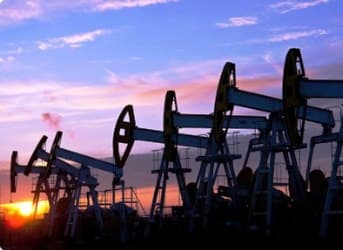The two most hotly debated scientific concepts associated with energy are “global warming” and “peak oil,” both with myriad proponents and detractors around the world.
In the latter case however, what is indisputable is that the last several decades have seen major fields in significant oil exporting nations decline. From Saudi Arabia’s Ghawar superfield through the Russian Federation’s vast west Siberian field to Indonesia, oil output has spiked, and, in the case of Indonesia, it left the Organization of the Petroleum Exporting Countries in 2009 because it ceased to be a net exporter of oil. For those with a sense of history Indonesia, then the Dutch East Indies, was a major factor in the outbreak of world War Two in the Pacific, as the Japanese in late 1941 determined to seize the oil-rich archipelago in response to a U.S. oil embargo imposed earlier that year.
The latest country to stare into the energy abyss of declining oil production is Colombia.
In a stark interview with RCN Radio, Colombia’s Finance Minister Mauricio Cardenas told his audience that Colombian oil reserves will last only eight more years at the current rate of consumption, adding, “We know that's not much time to sustain a pace of 1 million barrels per day. That's why we need to find reserves quickly.”
Related article: Peak Oil: Gone for Now but Celebrations will be Short Lived
Adding to the grim picture Cardenas said that as yet, state oil firm Ecopetrol SA, 80 percent governmental and 20 percent private, one of the 25 largest petroleum companies in the world, had yet to discover new fields as large as Arauca province’s Cano Limon (95,000 barrels per day) or the Cusiana-Cupiagua field in Casanare province in 2011. The Cusiana-Cupiagua field peaked at 434,000 bpd in 1999, declined the following year to 342,000 bpd and has been dwindling ever since, although the U.S. government’s Energy Information administration notes, “Colombia produced 923,000 barrels per day (bbl/d) of oil in 2011, up 35 percent from the 595,000 bbl/d produced in 2008,” adding that, “EIA forecasts that Colombia’s oil production will increase in the next two years: in the May 2012 edition of the ‘Short Term Energy Outlook,’ EIA projected that Colombian oil production will rise to 970,000 bbl/d in 2012 and will exceed one million bbl/d in 2013.”
Cardenas noted, “Finding fields like those is very difficult. None has shown potential of that magnitude thus far. There are several (fields) with some minor potential and they add up. And that's better because this isn't about winning the biggest prize, it's about winning several secondary prizes.”
The good news?
Last year Ecopetrol SA, recorded net profits of $15 billion marking the firm's second most profitable year ever, with Cardenas noting bpd production slightly above the EIA statistics, telling reporters, "Ecopetrol gave us excellent results last year... which fills us with optimism. We've been at (1.18 million barrels per day since the beginning of 2012."
But obviously Ecopetrol SA is going to have to dig deep into its cash reserves both to find and bring new fields online.
Related article: Oil, Much as Weapons, is Dangerous in the Wrong Hands
Bravado aside, one factor hobbling expanding production in Cano Limon are the ongoing guerrilla campaign of Colombia’s Marxist Fuerzas Armadas Revolucionarias de Colombia, more commonly known by the acronym FARC.
FARC was founded in 1964 and the Western hemisphere's longest-running guerrilla movement. FARC specializes in oil infrastructure attacks, particularly the 500 mile-long 100,000 bpd Cano Limon-Coveñas pipeline, the most heavily attacked oil infrastructure in the world. In 2001, the pipeline was attacked 170 times; in 2002, 42 times and during the first half of 2012, Ecopetrol pipelines and production facilities were attacked a total of 67 times. In fact, Cano Limon-Coveñas has been attacked so frequently that locals call it "la flauta" (the flute) because of the perforations punched in it by guerrillas.
ADVERTISEMENT
According to Cardenas, oil infrastructure security has improved since September 2012, with more than 20,000 troops now protecting oil infrastructure across the country, but a real measure of the reality of Cano Limon-Coveñas is that last year losses totaled approximately $1 million per day and the pipeline operator, California-based Occidental Petroleum company, declared "force majeure," as the company was unable to fulfill its contract due to an impediment from a "greater force." So, quite aside from falling production quotas, Colombia has to deal with an insurgency, which has yet to be definitively resolved.
Accordingly, the picture remains mixed for Colombia. The only certainties are that if Bogota is to ramp up production, it is going to have to spend a lot of money and deploy more troops, if it does not want to become Latin America’s poster child for “peak oil.”
By. John C.K. Daly of Oilprice.com


















